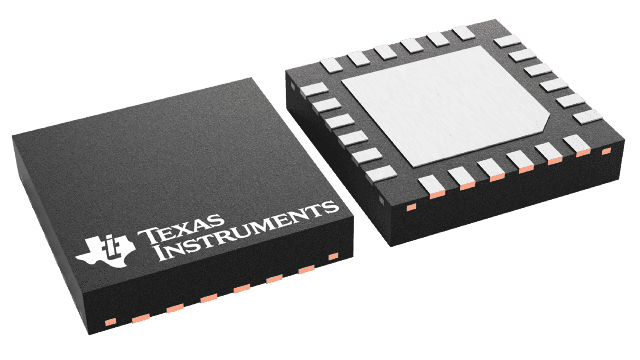패키징 정보
| 패키지 | 핀 WQFN (RTW) | 24 |
| 작동 온도 범위(°C) -40 to 85 |
| 패키지 수량 | 캐리어 250 | SMALL T&R |
DS80PCI102의 주요 특징
- Comprehensive Family, Proven System
Interoperability- DS80PCI102: x1 PCIe
Gen-1, Gen-2, and Gen-3 - DS80PCI402: x4 PCIe
Gen-1, Gen-2, and Gen-3 - DS80PCI800: x8/x16 PCIe
Gen-1, Gen-2, and Gen-3
- DS80PCI102: x1 PCIe
- Automatic Rate-Detect and Adaptation to
Gen-1, Gen-2, and Gen-3 Speeds - Seamless Support for Gen-3 Transmit FIR
Handshake - Receiver EQ (up to 36 dB), Transmit De-
Emphasis (up to –12 dB) - Adjustable Transmit VOD: 0.7 to 1.3 Vp-p (Pin
Mode) - 0.2 UI of Residual Deterministic Jitter at 8 Gbps
After 40 Inches of FR4 or 10 m 30-awg PCIe
Cable - Low Power Dissipation With Ability to Turn Off
Unused Channels: 65 mW/Channel - Automatic Receiver Detect (Hot-Plug)
- Multiple Configuration Modes: Pins/SMBus/Direct-
EEPROM Load - Flow-Thru Pinout in 4-mm × 4-mm 24-Pin
Leadless WQFN Package - Single Supply Voltage: 2.5 V or 3.3 V (Selectable)
- ±5-kV HBM ESD Rating
- −40°C to 85°C Operating Temperature Range
DS80PCI102에 대한 설명
The DS80PCI102 is a low-power, 1-lane repeater with 4-stage input equalization, and an output de-emphasis driver to enhance the reach of PCI-Express serial links in board-to-board or cable interconnects. The device is ideal for x1 PCI-Express configuration, and it automatically detects and adapts to Gen-1, Gen-2, and Gen-3 data rates for easy system upgrade.
DS80PCI102 offers programmable transmit de-emphasis (up to 12 dB), transmit VOD (up to 1300 mVp-p), and receive equalization (up to 36 dB) to enable longer distance transmission in lossy copper cables (10 meters or more), or backplanes (40 inches or more) with multiple connectors. The receiver can open an input eye that is completely closed due to inter-symbol interference (ISI) introduced by the interconnect medium.
The programmable settings can be applied easily through pins or software (SMBus/I2C), or can be loaded through an external EEPROM. When operating in the EEPROM mode, the configuration information is automatically loaded on power up, which eliminates the need for an external microprocessor or software driver.
